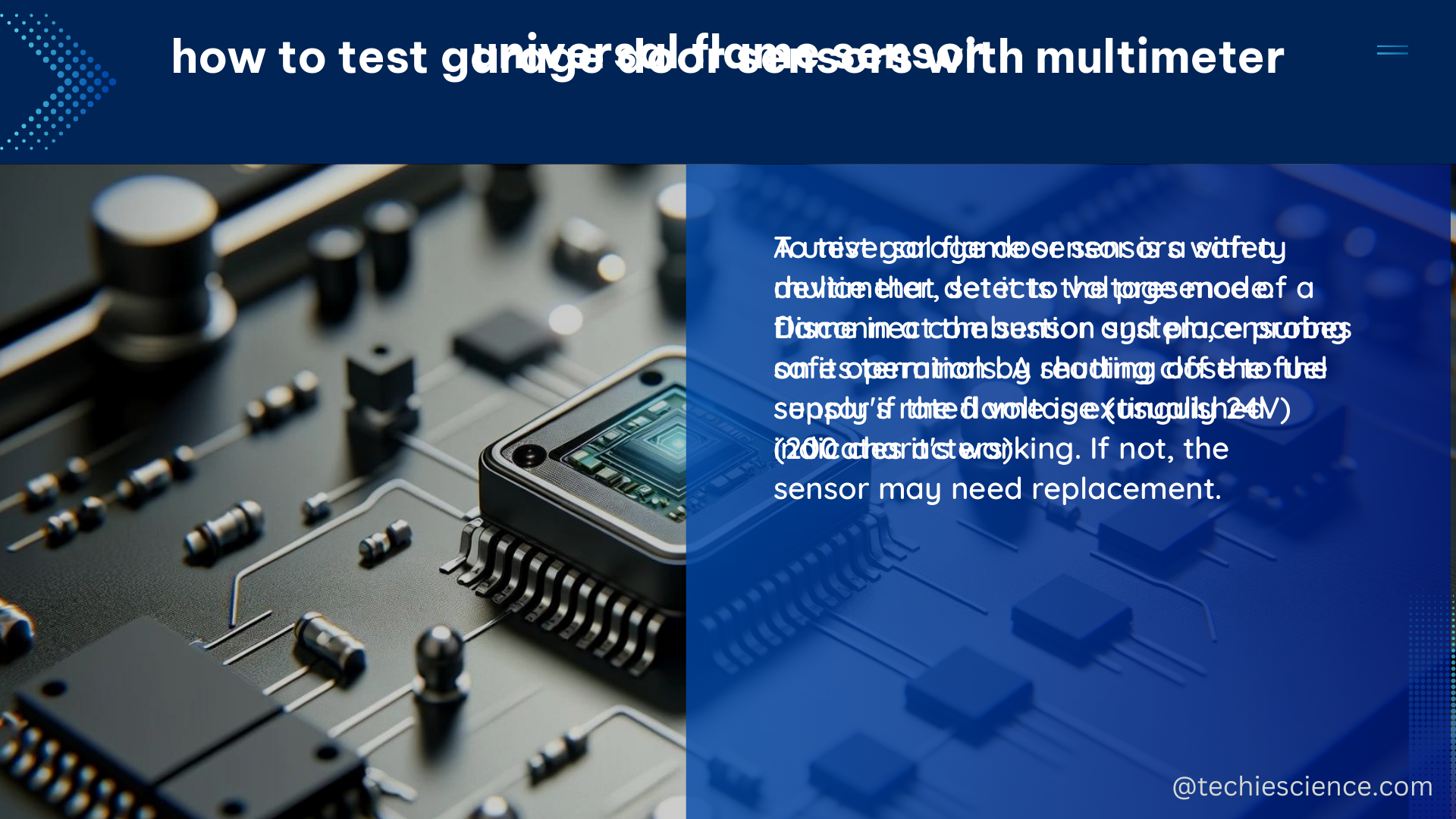The universal flame sensor is a critical component in various heating and combustion systems, responsible for detecting the presence of a flame and ensuring safe and efficient operation. This device utilizes the principle of flame rectification, a process where a low AC voltage is applied to the flame rod, and when inserted into a proper flame, the voltage converts to a DC voltage by traveling through the flame to ground. This DC voltage can be measured in microamps (μA) using a meter capable of measuring such small currents.
Understanding Flame Rectification
Flame rectification is the underlying mechanism that enables the universal flame sensor to detect the presence of a flame. When a flame is present, the ionized gases in the flame act as a conductor, allowing the low AC voltage applied to the flame rod to be converted into a DC voltage. This DC voltage can then be measured and used to determine the status of the flame.
The flame sensor typically has a coating to keep it clean, and the DC voltage reading from a clean flame sensor is typically 5 μA or more. If the reading is under 5 μA, it is likely that the flame sensor is dirty and requires cleaning. The exact threshold for a clean flame sensor can vary depending on the manufacturer and the specific application, but 5 μA is a commonly used reference point.
Cleaning the Flame Sensor

Proper cleaning of the flame sensor is crucial to ensure its reliable operation. The cleaning process involves using a 3M Scotchbrite pad to polish the sensor, ensuring that it is cool to the touch to avoid damaging the pad or leaving residue on the flame rod.
It is essential to avoid using abrasive materials like heavy grit sandpaper, as they can wear down the protective coating on the flame sensor and cause it to get dirty more rapidly in the future. After cleaning, the flame sensor should be reinstalled and tested again to verify the improvement in the flame signal.
Bench Testing the Flame Sensor
To test the flame sensor in a controlled environment, a bench test setup can be used. In this setup, a Bunsen burner can provide a similar flame as compared to the pilot flame, making it suitable for testing flame sensors.
The two common failures of the actual flame rod are contamination of the rod surface or contamination of the insulator surface. These issues can be easily identified and addressed by cleaning the sensor with a scouring pad.
Flame Signal Measurement and Interpretation
Measuring the flame signal is crucial for ensuring the proper functioning of the universal flame sensor. The flame signal is typically measured in microamps (μA) using a meter capable of measuring such small currents.
A clean flame sensor should typically read 5 μA or more. If the reading is under 5 μA, it is likely that the flame sensor is dirty and requires cleaning. It is important to note that the exact threshold for a clean flame sensor can vary depending on the manufacturer and the specific application.
Table 1: Flame Signal Measurement and Interpretation
| Flame Signal (μA) | Interpretation |
|---|---|
| 5 μA or more | Clean flame sensor |
| Under 5 μA | Dirty flame sensor, requires cleaning |
Preventive Maintenance and Troubleshooting
Regular maintenance and cleaning of the universal flame sensor are essential to ensure its reliable operation. It is recommended to follow the manufacturer’s guidelines for cleaning and maintenance, as the specific procedures may vary depending on the make and model of the sensor.
In addition to cleaning, it is important to inspect the flame sensor for any physical damage or wear and tear. If the sensor is found to be damaged or worn, it should be replaced to prevent potential safety issues and ensure the proper functioning of the heating or combustion system.
Conclusion
The universal flame sensor is a critical component in various heating and combustion systems, responsible for detecting the presence of a flame and ensuring safe and efficient operation. By understanding the principles of flame rectification, proper cleaning and maintenance techniques, and the interpretation of flame signal measurements, users can ensure the reliable and long-lasting performance of their universal flame sensors.
References:
- Deppmann, Measuring Flame Signal and Cleaning Flame Sensors | Deppmann, 2017.
- Electronics.stackexchange.com, How can I bench test a Flame Sensor (Flame Rectification), 2016.
- Hvac-talk.com, Flame Sensor vs Meter – HVAC-Talk, 2022.
- YouTube, FLAME SENSOR FLAME RECTIFICATION. EXPLAINED …, 2022.
- Hvacrschool.com, Flame Sensing – The Basics – HVAC School.

The lambdageeks.com Core SME Team is a group of experienced subject matter experts from diverse scientific and technical fields including Physics, Chemistry, Technology,Electronics & Electrical Engineering, Automotive, Mechanical Engineering. Our team collaborates to create high-quality, well-researched articles on a wide range of science and technology topics for the lambdageeks.com website.
All Our Senior SME are having more than 7 Years of experience in the respective fields . They are either Working Industry Professionals or assocaited With different Universities. Refer Our Authors Page to get to know About our Core SMEs.